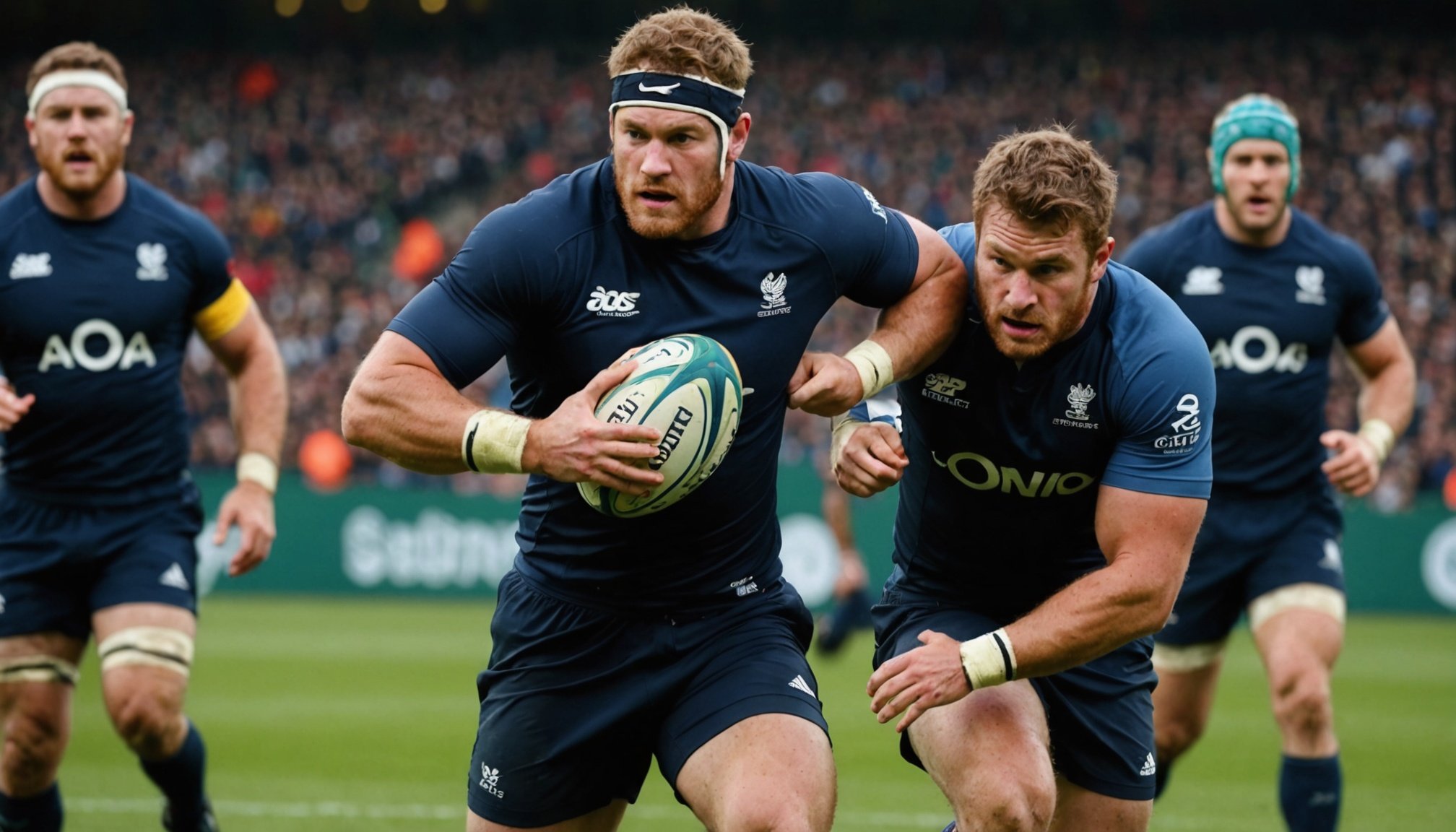Top Recovery Strategies for Elite Rugby Players After Matches: Elevate Performance and Wellness
Understanding the Importance of Recovery in Rugby
When it comes to elite rugby, the physical demands are immense. A single match can leave players exhausted, with muscle damage, dehydration, and mental fatigue being common aftermaths. Effective recovery strategies are not just optional; they are crucial for maintaining high performance levels, reducing injury risk, and ensuring athletes can perform at their best throughout the season.
“Recovery is not just about physical recuperation; it also impacts mental well-being, which is vital for optimal performance metrics,” notes a consensus statement on recovery and performance in sports[4].
Topic to read : Gear up: essential gel blasters for every player and style
Hydration and Nutrition: The Cornerstones of Recovery
Immediate Post-Match Hydration
Hydration is the first line of defense in post-match recovery. Rehydrating immediately after the match is essential to replenish lost fluids and electrolytes. Here’s a simple yet effective hydration plan:
- Rehydrate within 30 minutes: Consume a sports drink or water with electrolytes to replace lost salts.
- Monitor urine color: Aim for a pale yellow color to ensure adequate hydration.
- Continue hydration: Drink water or sports drinks throughout the day to maintain fluid balance.
Balanced Nutrition for Muscle Repair
Nutrition plays a critical role in muscle repair and energy restoration. Here are some key nutritional strategies:
Additional reading : Top sniper gel blasters for unmatched precision and stealth
- Consume a balanced meal within 2 hours: Include a mix of carbohydrates, protein, and healthy fats. For example, a meal of grilled chicken, sweet potatoes, and avocado.
- Protein intake: Aim for 20-30 grams of protein within the first hour after the match to aid in muscle repair.
- Carbohydrate replenishment: Focus on complex carbohydrates like whole grains, fruits, and vegetables to restore energy stores.
Innovative Recovery Techniques
Cryotherapy: Reducing Inflammation
Cryotherapy, or the use of ice baths, is a popular recovery technique among elite rugby players. Here’s how it works:
- Ice baths: Soak in an ice bath at a temperature of around 10-15°C for 10-15 minutes to reduce inflammation and muscle soreness.
- Contrast showers: Alternate between hot and cold showers to improve circulation and reduce muscle spasms.
Massage Therapy: Enhancing Circulation and Reducing Muscle Soreness
Massage therapy is another effective method for alleviating muscle soreness and improving circulation.
- Post-match massage: Schedule a massage within 24-48 hours after the match to help reduce muscle tension and improve recovery.
- Self-myofascial release: Use tools like foam rollers or lacrosse balls to release tension in the muscles.
Mental Recovery and Stress Management
Deep Breathing, Meditation, and Mindfulness
Mental recovery is just as important as physical recovery. Techniques such as deep breathing, meditation, and mindfulness can significantly aid in reducing stress levels and improving mental well-being.
- Daily mindfulness practice: Spend 10-15 minutes each day practicing mindfulness or meditation to reduce stress and improve focus.
- Team mindfulness sessions: Incorporate group mindfulness sessions into the team’s training program to foster a sense of unity and mental resilience.
Creating a Personalized Recovery Plan
Tailoring Strategies to Individual Needs
Each athlete’s needs vary, making it crucial to tailor recovery strategies to their unique physiological and psychological profiles. Here’s how to create a personalized recovery plan:
- Assess individual needs: Consider factors such as training load, injury history, and nutritional requirements.
- Customize recovery sessions: Include a mix of physical and mental recovery techniques based on the athlete’s specific needs.
- Regular review and adjustment: Review the recovery plan monthly and adjust as necessary based on performance metrics.
Scheduling Recovery Sessions Within Training Cycles
Balancing Intensity and Rest
Effective recovery implementation requires strategic scheduling within training cycles. Here’s how to balance intensity and rest:
- Daily recovery: Incorporate light stretching, hydration, and mental recovery techniques into the daily routine.
- Weekly sessions: Schedule more intense recovery sessions such as massage therapy and cryotherapy on a weekly basis.
- Monthly review: Adjust the recovery plan based on performance metrics and athlete feedback.
Case Studies of Successful Recovery Strategies in Elite Teams
The New Zealand All Blacks: A Model of Effective Recovery
The New Zealand All Blacks are a prime example of a team that prioritizes athlete management through advanced recovery strategies.
- Individualized nutrition plans: Each player has a tailored nutrition plan to meet their specific needs.
- Advanced recovery technologies: The team uses cutting-edge recovery technologies such as cryotherapy and compression garments.
- Mental preparation: The team places a strong emphasis on mental preparation and mindfulness practices.
“As a coach, it’s not just about winning games; it’s about ensuring our players are at their best every time they step onto the field. Effective recovery strategies are key to that,” says a coach from the New Zealand All Blacks.
Practical Implementation of Recovery Strategies
Recovery Checklist
Here is a detailed recovery checklist that elite rugby players can follow:
- Rehydrate immediately after the match
- Consume a sports drink or water with electrolytes within 30 minutes.
- Consume a balanced meal within 2 hours
- Include a mix of carbohydrates, protein, and healthy fats.
- Engage in light stretching or yoga
- Focus on gentle stretches to improve flexibility and reduce muscle soreness.
- Schedule a massage or cryotherapy session
- Within 24-48 hours after the match to aid in muscle repair and reduce inflammation.
- Practice mindfulness or meditation
- Spend 10-15 minutes each day practicing mindfulness or meditation to reduce stress and improve focus.
Table: Comparing Recovery Strategies
| Recovery Strategy | Benefits | Implementation Tips |
|---|---|---|
| Hydration | Replenishes lost fluids and electrolytes | Rehydrate within 30 minutes; monitor urine color |
| Balanced Nutrition | Aids in muscle repair and energy restoration | Consume a balanced meal within 2 hours; include protein, carbohydrates, and fats |
| Cryotherapy | Reduces inflammation and muscle soreness | Soak in an ice bath at 10-15°C for 10-15 minutes |
| Massage Therapy | Enhances circulation and reduces muscle soreness | Schedule a massage within 24-48 hours after the match |
| Mindfulness and Meditation | Reduces stress and improves mental well-being | Practice daily mindfulness or meditation for 10-15 minutes |
| Light Stretching or Yoga | Improves flexibility and reduces muscle soreness | Engage in gentle stretches after the match |
Quotes from Elite Athletes and Coaches
- “Recovery is not just about physical recovery; it’s also about mental recovery. You need to find ways to manage your stress and stay focused,” says Daniel Moore, a strength and conditioning coach[1].
- “The key to our success is our attention to detail in recovery. We make sure each player has a personalized recovery plan that meets their specific needs,” notes a coach from the New Zealand All Blacks.
- “After a match, I always prioritize hydration and nutrition. It’s crucial to replenish what you’ve lost to ensure you can perform at your best in the next match,” says an elite rugby player.
Recovery is a critical component of an elite rugby player’s training program. By prioritizing hydration, nutrition, innovative recovery techniques, and mental recovery, athletes can sustain high levels of performance throughout the season, reduce downtime, and enhance their competitive edge.
Remember, recovery is not an afterthought; it is a core part of athlete management. By integrating these strategies into your training program, you can elevate your performance and ensure you are always ready to give your best on the field.
In conclusion, the journey to optimal recovery for elite rugby players is multifaceted and requires a holistic approach. By understanding the importance of each recovery strategy, creating personalized plans, and scheduling recovery sessions effectively, athletes can achieve continuous high-level performance and maintain their well-being in the demanding world of professional rugby.










